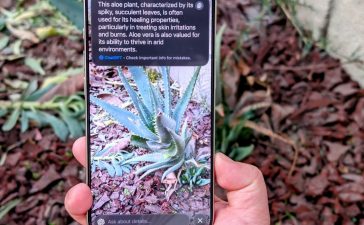GNOME 45 has just graduated from alpha test to beta, and will see final release late next month. Here is what to expect.
It should appear on September 20 if the developers hit the schedule in the project wiki. Incidentally, if you wanted to attend GUADEC, you’ve missed it – it happened last month, but you can still watch the talks on GNOME’s Youtube channel.
The announcement message doesn’t contain very much info, aside from a list of bugs from July’s alpha version that have been fixed.
The new version also means a new version of Mutter, which on X11 is GNOME’s window manager, and on Wayland is the compositor. The new version of Mutter will have a thread dedicated to handling KMS. Kernel Mode Setting, which we wrote about last year, is the modern way that Linux handles display hardware, and this change should result in smoother mouse and window movement, as well as improving support for a hardware-accelerated mouse pointer.
The new Mutter also brings in support for the YUV color model, as used in television and video, in addition to RGBA (Red/Green/Blue/Alpha), which is more traditional in computers. YUV isn’t an abbreviation: the letters represent luma and two channels of chrominance. The new functionality should assist in offloading color conversion to hardware.
Epiphany, officially called GNOME web and the desktop’s own browser, has received some improvements, notably including a new tab overview screen, replacing its older simple list. Many users on Linux probably won’t see this as we suspect most people stick to their distro’s default browser – usually Firefox – or install Google Chrome. Even so, Epiphany does have a life of its own – for instance, it’s the richest browser available for the FOSS BeOS descendant Haiku at the moment.
Epiphany is also the only WebKit-based browser we know of that can synchronize with Mozilla’s Firefox Sync. Although it was promised in the beta version, that is still more than Mozilla’s own Thunderbird email client can.
As is often the case, the new version of GNOME should see the debut of some new applications. The Loupe image viewer is one, which should replace the venerable Eye of GNOME app. Loupe uses the Glycin libraries to decode images, which means support for some 18 different image formats. Another is Snapshot, which is the camera-handling accessory, replacing Cheese and possibly the old Screenshot tool too. Both Loupe, under the name Image Viewer, and Snapshot are already on if you want to take an early look. The Tecla keyboard viewer might make it in too.
The Settings app is getting some significant changes and improvements. The About screen has been simplified, with some information moved to a pop-out Details screen, which will allow them to be copied to the clipboard. The handling of multiple displays, and of fractional scaling settings, has been redesigned and is now a little more Mac-like.
Date and time settings have been partially merged under a Clock & Calendar heading, and there have been refinements to multiple other settings screens too, including Keyboard, Notifications, Power, Networking, Thunderbolt, Sharing, Users, and more. Keyboard handling and accessibility in Settings has improved too: you can open it with Super+S, close tabs with Esc, and there’s better searching and handling of right-to-left alphabets.
The official GNOME theme, Adwaita, has been updated, and while the environment still discourages custom themes, the next release should allow the accent color to be changed. Some of the alternatives ought to improve accessibility for those with problems with color vision. The Reg FOSS Desk has perfectly fine color acuity, but still struggles to tell when buttons are on or off in many modern themes, so we think that this won’t only help those with color blindness.
The Baobab disk usage analyzer and Font Viewer apps have received Gtk4 facelifts, and there are tweaks to the Calculator, including some of the more advanced functions that you might not realize it has, like currency and unit conversions. Software has improvements too, with warnings of the end-of-life of Flatpak apps, better handling of both app and system updates, and the option to remove the data of apps which have been uninstalled.
Although it’s nominally been replaced by the new Text Editor app, the old GEdit has received some improvements too. Back in GNOME 43, the new Console replaced Terminal. Apparently, the Fedora project feels that Console isn’t up to scratch yet, so Terminal is another officially superseded app which may yet reappear.
Nautilus, also known as the Files app, has also been improved, with a refined grid and list views, more options for viewing columns, tweaks to searching and keyboard controls, file sizes in tooltips, and both bug fixes and performance improvements. Tweaks include clarifying the difference between files that have been deleted versus moved to the trash, removal of the option to format media that don’t support this, and better drag-and-drop and lassoo handling. The layout is more adaptive; for example, the sidebar automatically sizes itself to fit its contents.
The “Riga” release of GNOME will make its way into multiple distros later this year, first in rolling-release ones such as Arch and openSUSE Tumbleweed. You can expect to see it in Ubuntu 23.10 and Fedora 39, among many others, in the northern hemisphere fall. ®










